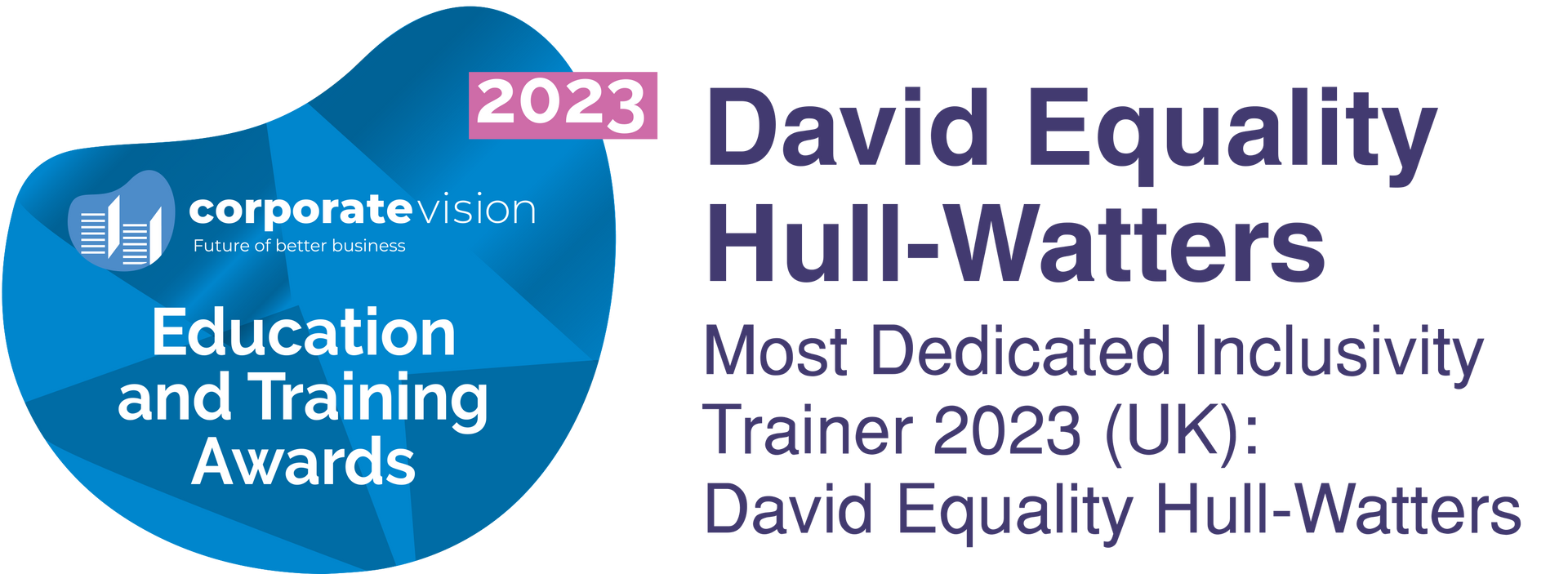Embracing Arts (All-staff)
C4K DEI Team Training
- All breakout activities for today can be found on this page.
- Please keep the tab open for ease.
- Scroll to each new activity when the time comes.
- Please make sure that all voices are heard and select a speaker, when required, to share a summary of what has been discussed.
Breakout Activity One: Sharing Experiences
Instructions
- The Leader for this discussion will be the person whose first name is first alphabetically
- The Leader will guide you through the questions below, ensuring that everyone has the opportunity to share (in the way that is most comfortasble for them)
- No speaker is needed for this confidential activity
Questions
- What types of disability have you encountered in your personal or professional life?
- Do you have any worries or concerns around disability or neuro-inclusion in your current role? If so, what are these?
- What advice or support can your colleagues offer?
Breakout Activity Two:
Celebrating Good Practice (Disability and Neuro-Inclusion)
Instructions
- Your Leader for this activity will be the person who was born in the earliest month of the year
- Your Leader will select a speaker for the team, who will share a brief summary of what was discussed. If you prefer not to speak, choose another colleague
- Your Leader will guide you through the questions below.
- Make sure that all voices are heard - consciously include all members of the team!
In relation to Disability and Neuro-Inclusion:
Team One (Room One)
- What do you and your team already do well but could do more consistently?
- Is there anything you'd like to do better? What could you do to be more inclusive?
Team Two (Room Two)
- What do we mean by accessibility and removing barriers?
- Are we getting it right with regards to accessibility?
A) For colleagues
B) For participants (audience)
Breakout Activity Three:
Receptive/Expressive Communication
Instructions
- The person born in the latest month of the year will be the Leader of this activity.
- Your leader will decide who will be Speaker A and who will be Speaker B.
- Your Leader will guide you through each part of the activity below:
PART ONE
In a moment, SPEAKER A is going to talk for one minute about their weekend and SPEAKER B is just going to listen.
OK – off you go [1 minute].
And stop!
How did that feel? Easy? Good!
PART TWO
Now, SPEAKER B is going to talk about their weekend for one minute. BUT they are not allowed to use any words containing the letter ‘e’.
Ready? Off you go! [1 minute].
And stop!
How did that feel?
Were you able to speak as fluently as your partner?
How did that make you feel?
SPEAKER A - how did it feel listening as your partner was struggling to put their thoughts into words? Frustrating? Annoying?
Discuss:
What was the purpose of this exercise?
How might it relate to your role?
Breakout Activity Four: Inclusive Practice Case Studies
Instructions
- Your Leader will be the person whose first name is last alphabetically.
- The Leader will guide you through the activity, ensuring all voices are heard.
- Discuss the Case Studies below and
2. Consider the related Discussion Prompts
3. Suggest Practical Tips to enhance inclusive practice.
Note: You may not have time to discuss all Case Studies, so please don't feel rushed. You can always save the link and return to these at a later time.
Some helpful links to assist with this activity:
ACAS information on Reasonable Adjustments
Case Study One
Artem really likes coming to see live performances at school but is nervous around new people. How will you make them feel more at ease?
Understanding the Individual
- What might be making Artem feel nervous around new people?
- How can you learn more about Artem’s communication preferences or sensory sensitivities?
- What does “feeling at ease” look or sound like for Artem?
Creating a Welcoming Environment
- How can the performance space and team help Artem feel safe and included before, during, and after the show?
- What small adjustments could you make in tone, body language, or approach to build trust?
- How might you introduce Artem to the group or performers in a way that feels comfortable for them?
Practical Strategies
- Are there routines or advance information (e.g., photos, short videos, rehearsal clips) that could help Artem know what to expect?
- Could you provide a quiet or familiar space for Artem to regroup if they feel overwhelmed?
- How can you make sure any instructions or introductions are clear, calm, and not rushed?
Social Inclusion & Peer Support
- How might you encourage peers to support Artem in positive, natural ways?
- What ground rules or norms can you set to promote kindness and patience among the group?
- How can you model inclusive communication and reassure Artem without drawing unwanted attention?
After the Performance
- How could you check in with Artem afterwards to see how they felt?
- What signs might indicate that Artem enjoyed the experience, even if they didn’t say much?
- How could feedback from Artem help you improve future inclusive experiences?
Case Study Two
Paawel is deaf and is learning to lip read, so is looking forward to seeing the show. He hopes that he’ll be able to follow the story, because another theatre company were at the school last year and he says he became so confused.
What will you do to make sure that Paawel enjoys the show as much as his peers?
Understanding Paawel’s Needs
- What challenges might Paawel face while watching a live performance that relies heavily on spoken dialogue or sound cues?
- How confident are you that everyone in the team understands how to communicate clearly with someone who lip reads?
- What can you do to learn more about Paawel’s communication preferences before the performance?
Inclusive Performance Design
- How can you make your facial expressions, gestures, and physical storytelling clearer to help Paawel follow the story?
- Are there moments in the performance that could be confusing without sound? How could these be adapted visually?
- How can lighting and stage positioning be used to ensure Paawel always has a clear view of speakers’ faces?
Collaboration and Communication
- How can the team coordinate to ensure everyone speaks one at a time and faces the audience?
- What could you do if you notice Paawel looks confused or disengaged during the show?
- How might you check in with Paawel after rehearsals or performances to see what’s working well and what could be improved?
Preparation and Support
- Could you provide Paawel with a short story summary or character guide beforehand to help him follow the plot?
- Would visual cues, projected captions, or printed scripts help support his understanding?
- How might you rehearse accessibility—just as you rehearse performance—to ensure inclusion feels natural and embedded?
Reflection After the Show
- How will you gather Paawel’s feedback on his experience?
- What signs (verbal and non-verbal) might indicate that Paawel is enjoying and following the story?
- How could you use this learning to make future performances more accessible for Deaf or hard-of-hearing audience members?
Case Study Three
Ellen has Downs Syndrome and although able to speak, her speech can be quite unclear at times, especially when she is excited. She has so many questions to ask about the show, but you are struggling to understand. What might help you to communicate better?
Understanding and Patience
- How do you currently respond when you can’t understand what someone is saying?
- What might Ellen be feeling if she’s excited but not fully understood?
- How can you show that you’re listening and value what she’s saying, even if you need her to repeat herself?
Communication Strategies
- What practical techniques can help improve mutual understanding — for example, slowing the pace, rephrasing, or asking yes/no or multiple-choice questions?
- Could you use gestures, facial expressions, or written prompts to support communication?
- How can you check that you’ve understood correctly without making Ellen feel self-conscious?
- How might you work with a teaching assistant, carer, or peer who knows Ellen well to help interpret her meaning respectfully?
Creating a Supportive Environment
- How can you ensure Ellen feels comfortable and not rushed when asking questions?
- What signals (body language, tone, eye contact) might help reassure Ellen that she is being listened to and respected?
- How can you prepare the space or schedule to allow more time for conversations with Ellen and others who may need extra communication support?
Team Awareness and Inclusion
- How can you encourage the rest of the team or cast to be patient and inclusive in their interactions with Ellen?
- How might you model inclusive communication techniques for others to follow?
- What could you do to make sure Ellen’s curiosity and enthusiasm are celebrated rather than seen as a challenge?
Reflection and Growth
- What did you learn from your interaction with Ellen that could help you in future situations?
- How can this experience strengthen your confidence and empathy as a communicator?
- How will you know that Ellen feels heard, understood, and included in the experience?
Case Study Four
Marlon has had a bad start to the day and is experiencing extreme sensory overload. His teacher warns you that their verbal TICS are more pronounced than usual and they may become noisy during the performance.
What can you do to reassure the teacher and Marlon?
Understanding Sensory Overload and Tics
- What do you already know about sensory overload and how it affects focus, comfort, or behaviour?
- How might a busy performance environment (lighting, sound, audience reactions) impact Marlon’s experience?
- What does it mean for Marlon to feel “safe” and “in control” in this context?
Communication and Reassurance
- How can you reassure the teacher that Marlon’s presence and tics are welcome and not disruptive?
- What can you say or do to let Marlon know that it’s okay to make noise or move if they need to?
- How might your body language, tone of voice, and pacing of speech help convey calm and acceptance?
Adjusting the Environment
- What adjustments could help make the space more comfortable (e.g., lighting, volume, seating arrangement)?
- Could you offer Marlon the choice of where to sit — for example, near an exit or at the edge of the group?
- How can you balance inclusion for Marlon with maintaining focus and flow for the rest of the audience?
Collaborating with Others
- What role can the teacher or a support assistant play in helping Marlon self-regulate during the performance?
- How might you involve your team to ensure everyone is aware, understanding, and supportive?
- What steps could you take beforehand to prevent misunderstandings or unnecessary attention being drawn to Marlon?
Building a Culture of Acceptance
- How can you use this experience to normalise neurodiversity and visible differences in future performances?
- What messages can you reinforce with your cast or crew about inclusion, patience, and empathy?
- How might this situation help you model what “belonging” truly looks like in a creative space?
Post-Performance Reflection
- How will you check in with Marlon afterwards to see how they felt and what helped or didn’t help?
- What might you learn from this that could inform your approach with other neurodivergent audience members?
- How can you capture these insights in your inclusive practice for future tours or workshops?
Case Study Five
Taysha is partially-sighted and enjoys the colourful performance but misses the details of the costumes and props being used. How will you ensure that Taysha gets the most out of your performance?
Understanding Taysha’s Experience
- How might Taysha experience a performance differently from her peers?
- What aspects of the show (movement, facial expressions, lighting, props) might be less accessible to her?
- How can you find out what elements of the performance Taysha most enjoys or connects with?
Adapting the Performance
- How can you use clearer verbal description or expressive dialogue to convey visual details that might otherwise be missed?
- Could you make small adjustments — such as contrasting costumes, bolder props, or clearer lighting — to help her see more?
- Are there opportunities to use sound, music, or touch (where appropriate and consented) to enhance understanding and engagement?
Communication and Collaboration
- How might you talk with Taysha or her teacher beforehand to learn about her preferred ways of engaging with performances?
- What questions could you ask after the show to find out what helped her follow the story best?
- How can you make sure Taysha feels comfortable sharing if something wasn’t accessible or enjoyable?
Practical Planning
- Could you provide a touch tour or a chance to handle key props and costume pieces before the show begins?
- How can your team ensure that scene changes or transitions are clearly signposted (verbally or through music)?
- What training or awareness might help your team better understand visual impairment and sight loss?
Inclusive Culture
- How can you promote a team culture where accessibility is built in — not added on?
- What can you learn from this experience to improve future performances for partially sighted or blind audience members?
- How might Taysha’s perspective enrich your own understanding of storytelling through multiple senses?
Breakout Activity Five: Terminology
Instructions
- The person whose first name comes first alphabetically will be the Leader
2. The Leader will decide on a speaker who will feedback to the whole group, when we return to the Main Room. If you prefer not to be the speaker, choose someone else.
3. Avoid specific reference to names when using examples
4. Please make sure that all voices are heard
Your leader will guide you through each of the following questions:
- How would you define the terms bullying and harassment?
2. How do these terms differ? What does the law say?
3. Are we adequately equipped to respond effectively to instances of bullying or harassment? Are we getting it right?
4. Is there more that could be done?
Useful information on this topic: https://www.gov.uk/workplace-bullying-and-harassment
















